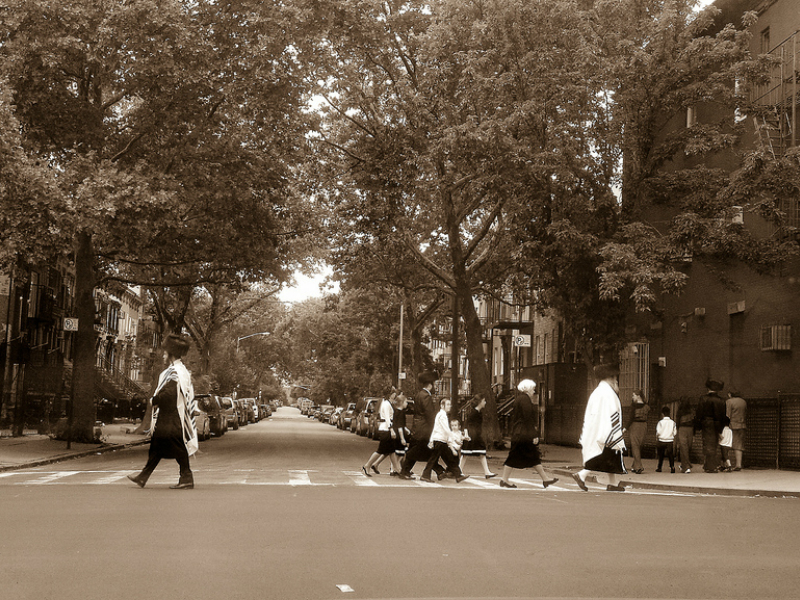After moving back to Toronto 12 years ago, I taught Jewish studies part-time at TanenbaumCHAT for a short while. It seemed to me that it would be an opportunity to share the beauty of Torah with young people, most of whom came from non-observant homes. I also saw it as a way of dispelling myths about religious people. Like many teachers at the Jewish day school, I fancied myself cool enough for teenagers to easily relate to me and my form of Judaism. (Whether that was true is another matter entirely.)
I expected to be asked many questions – and I was. Inquiring minds wanted answers to the deepest theological and philosophical issues, as well as rational explanations of seemingly archaic rituals. However, the most-asked question, or so it seemed, was why Orthodox Jews walk on the street – as opposed to the sidewalk – on Shabbat.
READ: VALE: WHY ORTHODOX SCHOOLS ARE THRIVING, WHILE OTHERS ARE NOT
I had not previously given much thought to this anomalous behaviour. However, since the notion of Jewish jaywalkers weighed so heavily on these impressionable young folks, I tried to see if I could make sense of this phenomenon. It couldn’t be a conscious effort to challenge authority. After all, why would an otherwise law-abiding segment of the community deliberately transform themselves into petty criminals beginning with sunset on Friday and ending at dark on Saturday night?
Two explanations came to mind, both of which see this phenomenon in terms of people using the roadway to express essential elements of Shabbat. (Some may not even realize why they are doing it, but still hold these ideas in their subconscious.)
The first reason relates to what a road is used for. All week, we hurry along it on our way to work, the store, the gym, the theatre and so forth. Some people spend a lot of time carpooling their children to school, play dates and lessons. On Shabbat, all of these activities cease for the observant person. It is a time for focusing more on spiritual pursuits. By walking on the street, it’s as if a person is acknowledging the different nature and pace of the day. On a subliminal level, Shabbat becomes a day when it is difficult to delineate where the sidewalk ends and the road begins.
The other explanation has to do with another aspect of Shabbat. When people drive in a way that is inconsiderate, boorish or dangerous, we sometimes say that they think they “own the road.” Well, who really does own the highways and byways? Technically, it’s usually the municipality or province. However, the religious person believes that since the Almighty created the entire universe, including the raw materials that go into building a road, they ultimately all belongs to Him. God allows us to use everything, on the understanding that we will do so in a productive and positive fashion. Shabbat is the day when we step back and take time to appreciate God’s world. Thus, the Sabbath street stroller is, in a way, temporarily reclaiming the road for God. He or she can now enjoy the beauty of the Almighty’s world, rather than manipulate it, as we do the rest of the week.
Of course, there is no justification for walking in a way that will obstruct traffic, or in a manner that is dangerous to one’s self or others. However, one day of the week, there is an opportunity for us to view the road in a different way. We can stand on the sidewalk while at the same time traveling a virtual highway, not one that is computer-generated, but one that was created to give us the opportunity to appreciate the world around us from a spiritual perspective. It is the road less traveled, but it’s the one that has assured our survival for thousands of years.

